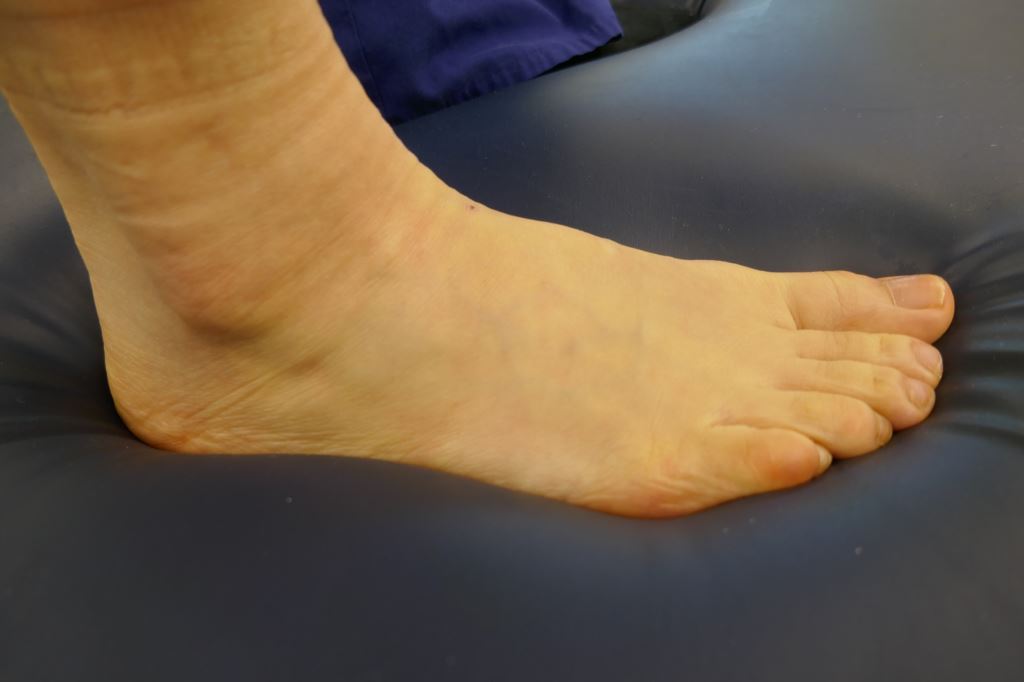Case Study: Painful Ankle
Presented by: Dr John Negrine
A 39 Year old man presents with a painful ankle: He strenuously denies any history of injury. The pain is so severe that he can’t sleep. The pain has been episodic over the past few months but in the last week has markedly increased in severity. He is otherwise well, a non-smoker and non-diabetic. He does not take any regular medications.

On Examination: He is unable to weightbear on the affected ankle. The ankle is swollen and hot. There is pain on moving the ankle. His subtalar joint moves normally.
Investigations: His GP has ordered a CT scan and an ultrasound. The CT scan shows an old avulsion from the distal fibula. The ultrasound was reported as showing ruptures of the anterior talo-fibular ligament (ATFL) and the calcaneo-fibular ligament (CFL).
MRI is suggested for further investigation in the report.
Impression: A hot swollen ankle with no history of trauma is most likely an acute arthropathy and in a 39 year old man in Sydney the most likely cause is gout.
Next step: Under sterile conditions using betadine and alcohol prep and strict no touch technique, just medial to the tibialis anterior tendon at the level of the joint, the joint is aspirated.
At aspiration: 3 cc of turbid fluid are sent for urgent histological examination (microscopy, white cell count, examination under polarised light to look for crystals, gram stain as well as culture). Also ordered are FBC/ESR/CRP and serum uric acid.
Findings: No bacteria. 6,600 white cells/ml, Urate crystals seen intra and extracellular on microscopy. Culture some days later no growth. ESR 28, CRP 27.7 Urate 0.63
Diagnosis: Acute attack of gout conclusively proven (ie. Not just an elevated serum uric acid).
Treatment: Cortisone injection into the joint. Colchicine/Indomethacin
Take home messages: No history of trauma means the ultrasound report was a red-herring.
An acutely swollen joint in the absence of a penetrating injury is usually an acute arthropathy. Blood born infection except in IV drug users is rare even in diabetic patients, nonetheless always send joint fluid for gram-stain and culture, missing a septic arthritis is a disaster.


